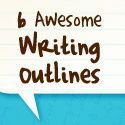There is an old adage for writers that simply states, “write what you know.”
Great, you think to yourself, let me take a quick catalogue of what I know:
- Lyrics to every popular 90’s song imaginable.
- How to re-start my cable box when HGTV goes out.
- What it’s like to live a very normal, boring life in the suburbs.
- How to cook a delicious green bean casserole.
Unfortunately, none of those known items seems like the proper inspiration for writing a novel. So where does that leave us? Well, prior to the Internet you would have been entirely reliant upon your imagination (which isn’t necessarily a bad thing, but your imagination does have its limits). But now we have a tool in our corner that has endless possibilities when it comes to teaching us the things we need to know to write a great piece of work.
To get you started, let me suggest a few alternative uses for some of the Internet’s three most common resources.
1) YouTube: Since it launched in 2005, YouTube has become our go-to guide for Internet videos spanning nearly every subject imaginable. But while it may be most popular for humorous outtakes, cute kittens and unknown talent, YouTube also offers a plethora of educational videos. Not just scientifically educational videos (like renowned astrophysicist Neil deGrasse Tyson’s take on the science of Star Trek) but videos that can help you understand the power of incredible moments in history like Martin Luther King’s “I Have a Dream” speech and the explosion of the space shuttle Challenger. You can also watch some great how-to videos, like how to knit a blanket or change a tire. It’s hard to describe something you can’t see, and that’s where YouTube can help. Your characters no longer have to be limited to events you’ve seen and things you know how to do.
2) Wikipedia: If you’re under the age of 20, you probably don’t remember a little program called Encarta and you definitely don’t remember the joys of the Encyclopedia Britannica. We’ve come a long way in our information resources, especially now that we have Wikipedia. Though not the most accurate resource, for a free, web accessible information medium it’s pretty incredible. From people and places to events and entertainment, Wikipedia has it all in a well-organized, easily searchable format. If one of your characters has a child with autism or lives in a city you’ve never visited, Wikipedia can give you the facts and information to make you sound like you know what you’re talking about.
3) Google Earth: Favorite tool of stalkers and geography nerds alike, Google Earth happens to be my ultimate tool for writing. You might not think of Google Earth as a writing tool, but it has the ability to give you geographical reference points for any place in the world. Just because you’ve never been to Chicago doesn’t mean you can’t describe the streets, the L station, etc. Zoom in on a satellite image to get a better idea of the city layout, then hit the “Street View” to see things from the sidewalk. You can trace a character’s steps from their apartment to the train station, work, or the nearest pizza place. But this tool doesn’t limit you to just Chicago, you can get satellite views for almost anywhere in the world and street views for many big cities like London, Paris and Tokyo. Google Earth is a window into another place, another life that you might not have lived yet.
Of course the very best way to get the most out of these Internet tools is to use them together. Like the alignment of powers that creates Captain Planet (he’s our hero!), when Google, Wikipedia and YouTube come together it’s like a supernova taking place somewhere on the world wide web.
As an example, my next novel (preview coming soon) involves characters from all over the world. Unfortunately, my budget has thus far restricted me from traveling to all the places in my book, so to describe some of my characters in their natural habitats I took to the streets, er, webs.
Two of my characters are an elderly couple who live in the suburbs of London. I used Wikipedia to research the demographics of London suburbs until I found one that sounded reasonable for older, middle class retirees . Then I used Google Earth to zoom in on the neighborhood and find out where the Tube stations were, how far it would be to walk to a restaurant and then did the Street View to see what they would see along the way. I did the same thing for another character who lives in Sydney, Australia, only this time I also went to YouTube for videos of people surfing at Bondi Beach so I could more accurately describe the setting (and the art of surfing itself, since my beach skills are limited to frolicking in the knee deep water until a large wave knocks the sunglasses off my head and sends me sulking back to shore).
The point is, the Internet has more to offer than cute kitty videos, porn and cheap shopping. Use it for a little research and suddenly you’ll find it’s a lot easier to “write what you know.”
Later days,
Shannon
 We're
We're 








